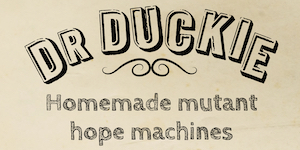
Mink Stole and Divine in Multiple Maniacs
God, I love Multiple Maniacs. In 1970, John Waters’s first full-length talkie birthed Divine as we know, fear and adore her; killed off the 60s while anticipating punk; and gave us the rosary job and Lobstora. Now Criterion have released it on Bluray. Here, with permission, is my review for the May 2017 issue of Sight & Sound. (FYI I also included the picture in my top ten list for the last S&S greatest-film-ever poll.)
It’s no accident that Multiple Maniacs (1970) opens with a carnival barker. Transgressive spectacle is the name of the game in John Waters’s first feature-length talkie – though it’s curious to note, almost half a century on, how some things retain the power to shock, others lose it and others take it on. The barker in question, Mr David (David Lochary), is drumming up interest in Lady Divine’s ‘Cavalcade of Perversions’, a roadshow that satisfies straight suburbanite prurience by exhibiting such unconscionable sights as a puke- eater, a human ashtray and “two actual queers kissing like lovers on the lips!” More scandalous than the activities themselves is the fact that the freaks are enjoying themselves so damn much. Something similar could be said about Multiple Maniacs itself: as well as being a scorching blast of proto-punk rebellion and a sophisticated mélange of eclectic formal influences, it’s a gleefully slapdash exercise in doing what feels good.
By virtue of running the Cavalcade – which is really a roving excuse to relieve squares of their wallets and sometimes their lives too – Divine and Mr David are the warped parental figures of an extended family on the brink. The Cavalcade clan are destabilised by Divine’s escalating bloodlust and Mr David’s affair with wannabe starlet Bonnie (Mary Vivian Pearce), not to mention Divine’s handful of a daughter (Cookie Mueller) and the advent of an alluringly religiose pervert (Mink Stole). The gang’s psychodynamics play out in a whirl of polymorphous desire, murderous rage, outsized set pieces and strange epiphanies. The aesthetic is wildly ironic, defying the suspension of disbelief at every turn; yet the cast play it straight and the sensibility is shot through with the sincere satirist’s indignation at normative hypocrisy and cant.
Multiple Maniacs was a watershed for Waters, Divine and the rest of the Dreamland collective, which mostly comprised middle-class Baltimore Catholic kids turned countercultural drop-outs. There had already been shorts (Hag in a Black Leather Jacket, Roman Candles, Eat Your Makeup) and a picaresque feature without dialogue (Mondo Trasho) that set a tone of proud schlock-culture grotesquerie. That was taken to new extremes, for sure, but now character and narrative came to the fore too.
Divine is the heart of the picture, a spectacular sacred monster who knows no limits but feels things deeply. In her pomp, she’s sheer weaponised glamour, a snarling, smouldering travesty of Elizabeth Taylor and Jayne Mansfield rolled into one. But she can also evoke the femme fatale of noir, the demure, put-upon Hausfrau of the women’s picture and the rampaging colossus of King Kong or Godzilla. Crucially, there’s no winking: whether boiling with rage, cooing with pride or trembling with sexual awakening, she plays it for real. It’s this sincerity that lends weight to the unfolding atrocities, tethering in emotional reality Divine’s absurd adventures in criminal enormity (gorging on raw offal standing in for human flesh) and spiritual awakening (a visitation from the Infant of Prague), as well as her unconventional domestic life and her surprising, unhinging rape by a 15ft lobster.
The cinematic genealogy of this heady concatenation is rich and varied: multiple classical Hollywood genres rub against exploitation tropes derived from Herschell Gordon Lewis, Russ Meyer and Swedish softcore; yet no less evident are traces of Warhol, Buñuel, Bergman and Pasolini, along with the Theatre of the Absurd. And it’s hard not to think of Kenneth Anger’s Scorpio Rising when watching a mob- handed recreation of the Stations of the Cross intercut with the notorious church-filmed ‘rosary job’. If the film’s religious satire still startles, its offhand valorisation of the Weathermen and casual narrative exploitation of the Sharon Tate murders – both torn from the headlines – generate real frissons. Meanwhile supposedly shocking set pieces (shooting up, smashing a car) seem less shocking today than all that body hair.
Criterion’s restoration is astonishing, rendering clean, sharp and fully audible a homemade 16mm opus whose scuzzy edges were, for some, part of its charm. The bonus material includes a commentary from Waters and interviews with cast members, from which three themes emerge: first, the extent to which the production used what was to hand, from performers’ own personae and wardrobes to familiar locations (the bar Edith owns in the film is the bar where Edith Massey worked in real life); second, the professionalism of Waters’s practice, however wild his material; and third, the social bonds between the surviving makers of the movie, which endure to this day. In many ways a document of the death of the 60s, Multiple Maniacs also kickstarted an extraordinary journey that made an underground star of Divine and, through the successive breakthroughs of Pink Flamingos (1972), Hairspray (1988) and the latter’s musical adaptation, saw this bunch of freaks carve themselves a place in America’s bosom.

